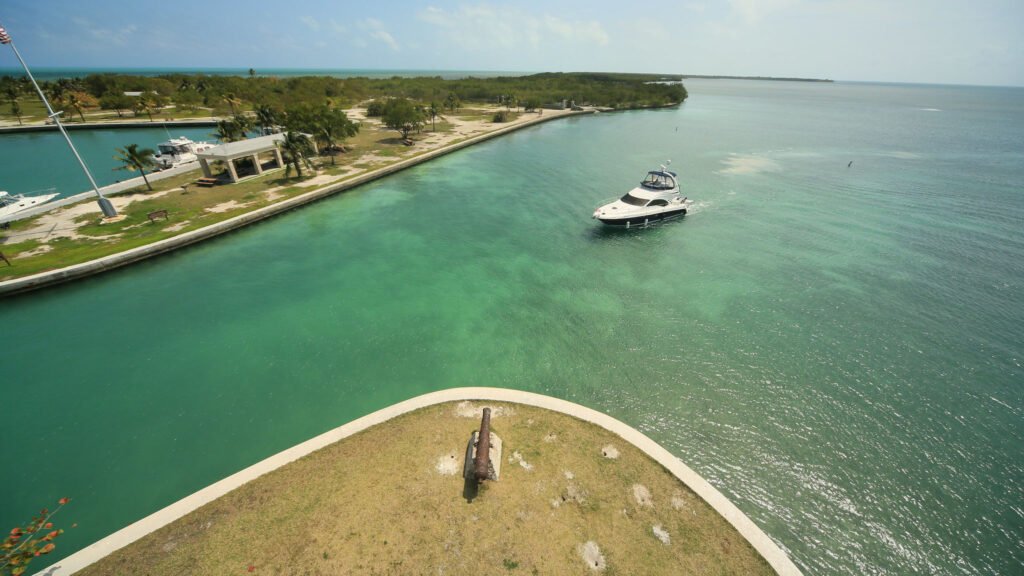Explore the underwater wonderland of Biscayne National Park in Florida. Learn about its history, biodiversity, attractions, activities, accommodations, and conservation efforts. Plan your visit today!
Table of Contents
Introduction to Biscayne National Park
Nestled at the northernmost part of the Florida Keys, Biscayne National Park is a unique treasure trove of aquatic beauty and diverse wildlife. Encompassing over 172,000 acres, this marine sanctuary is renowned for its crystal-clear waters, vibrant coral reefs, and lush mangrove forests. Whether you’re an adventure seeker or a nature enthusiast, Biscayne National Park offers an unparalleled experience in the heart of Florida’s coastline.
History and Background
Biscayne National Park has a rich history that dates back thousands of years, from the indigenous peoples who first inhabited the area to the Spanish explorers who charted these waters. Established as a national monument in 1968 and later designated a national park in 1980, Biscayne has long been recognized for its ecological importance and cultural significance. The park preserves remnants of shipwrecks and other historical artifacts, providing a fascinating glimpse into the past.
Biodiversity of Biscayne National Park
The biodiversity within Biscayne National Park is astonishing. The park’s waters are home to more than 500 species of fish, as well as a variety of marine mammals, including dolphins and manatees. The coral reefs are vibrant ecosystems, supporting an array of life forms from colorful corals to spiny lobsters. On land, the mangrove forests serve as crucial habitats for birds, reptiles, and amphibians, making Biscayne a true biodiversity hotspot.
Famous Attractions
One of the park’s most famous attractions is the Biscayne Bay Lagoon, a serene body of water perfect for boating and kayaking. The Maritime Heritage Trail offers an underwater adventure where visitors can snorkel or dive to explore shipwrecks and coral reefs. The islands of Boca Chita Key and Elliott Key are also popular, offering scenic picnic spots, historic structures, and hiking trails.
Activities in Biscayne National Park
Visitors to Biscayne National Park can indulge in a variety of activities. Snorkeling and scuba diving are top attractions, allowing visitors to get up close with the park’s vibrant marine life. Kayaking and boating provide opportunities to explore the bay and its mangrove channels. Fishing enthusiasts can enjoy a day out on the water, while bird watchers will find the park’s diverse avian population a delight.
Accommodations Near Biscayne National Park
While there are no hotels within Biscayne National Park, nearby accommodations in Miami and the Upper Keys offer a range of options. From luxurious resorts to cozy bed and breakfasts, visitors can find a place to suit their preferences and budget. Camping is also available on Elliott Key and Boca Chita Key, providing a more immersive experience in nature.
Weather Conditions
Biscayne National Park enjoys a subtropical climate, characterized by warm, humid summers and mild, dry winters. The best time to visit is during the winter months from November to April, when temperatures are more comfortable and rainfall is minimal. However, summer offers warmer waters for snorkeling and diving, despite the higher likelihood of thunderstorms and hurricanes.
Tips for Visiting Biscayne National Park
When planning a visit to Biscayne National Park, it’s essential to prepare adequately. Bring plenty of water, sunscreen, and insect repellent. Wear comfortable clothing and sturdy shoes for hiking. If you plan to snorkel or dive, bring your gear or rent from local outfitters. It’s also advisable to check weather conditions and park alerts before your trip to ensure a safe and enjoyable experience.
Visitor Information
Biscayne National Park is accessible by boat from various points in Miami. The Dante Fascell Visitor Center in Homestead is a great starting point, offering exhibits, educational programs, and guided tours. Park entrance is free, but some activities, such as camping and boat rentals, may have associated fees. For more details, visit the official park website.
Conservation Efforts
Conservation is a core mission at Biscayne National Park. Efforts include protecting the delicate coral reefs, managing the impacts of boating and fishing, and preserving the park’s historical sites. The park collaborates with various organizations to conduct research and implement strategies to mitigate environmental threats. Visitors can contribute by following Leave No Trace principles and respecting wildlife habitats.
For those eager to delve deeper into Biscayne National Park’s wonders, additional resources abound. Click here to explore the park’s official website for detailed information on activities, events, and educational programs.
Biscayne National Park is a remarkable destination that offers a unique blend of natural beauty, recreational opportunities, and historical intrigue. Whether you’re diving into its clear waters, exploring its lush islands, or learning about its rich past, Biscayne provides an unforgettable experience. Plan your visit today and discover the underwater wonderland that awaits in Florida’s Biscayne National Park.
You may also like EXPLORING EVERGLADES NATIONAL PARK: A COMPREHENSIVE GUIDE TO FLORIDA’S NATURAL WONDER

